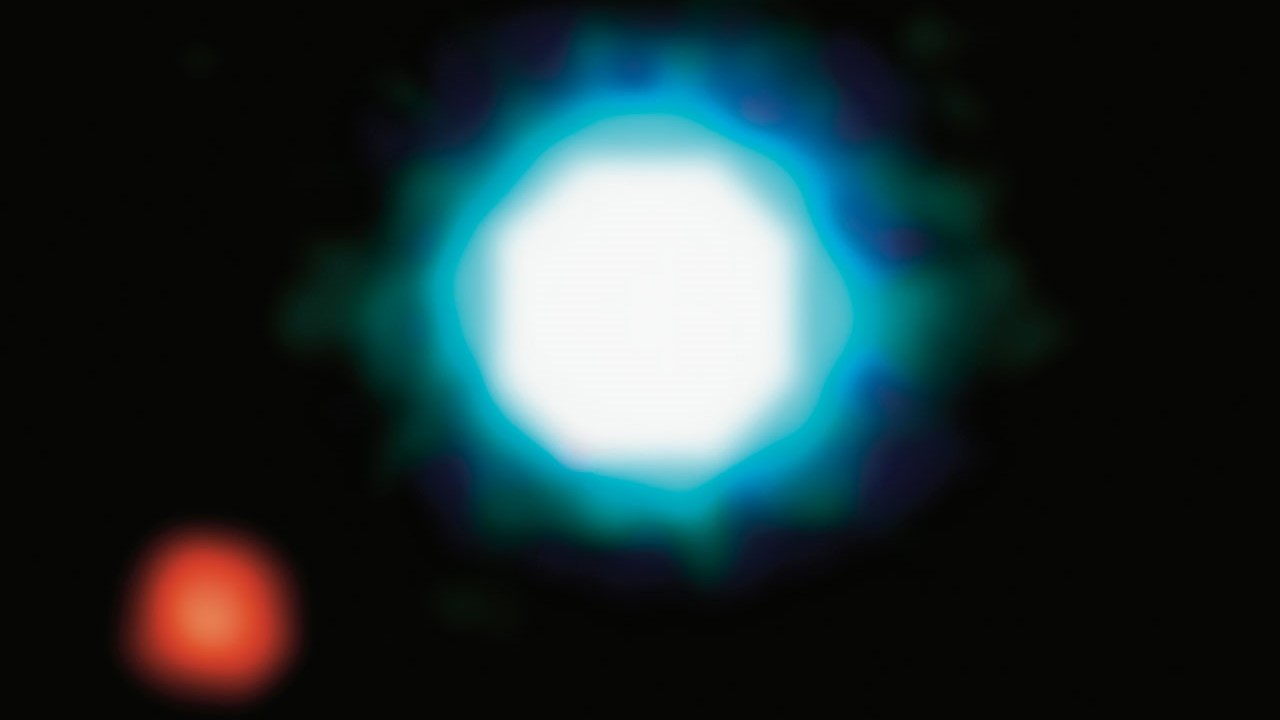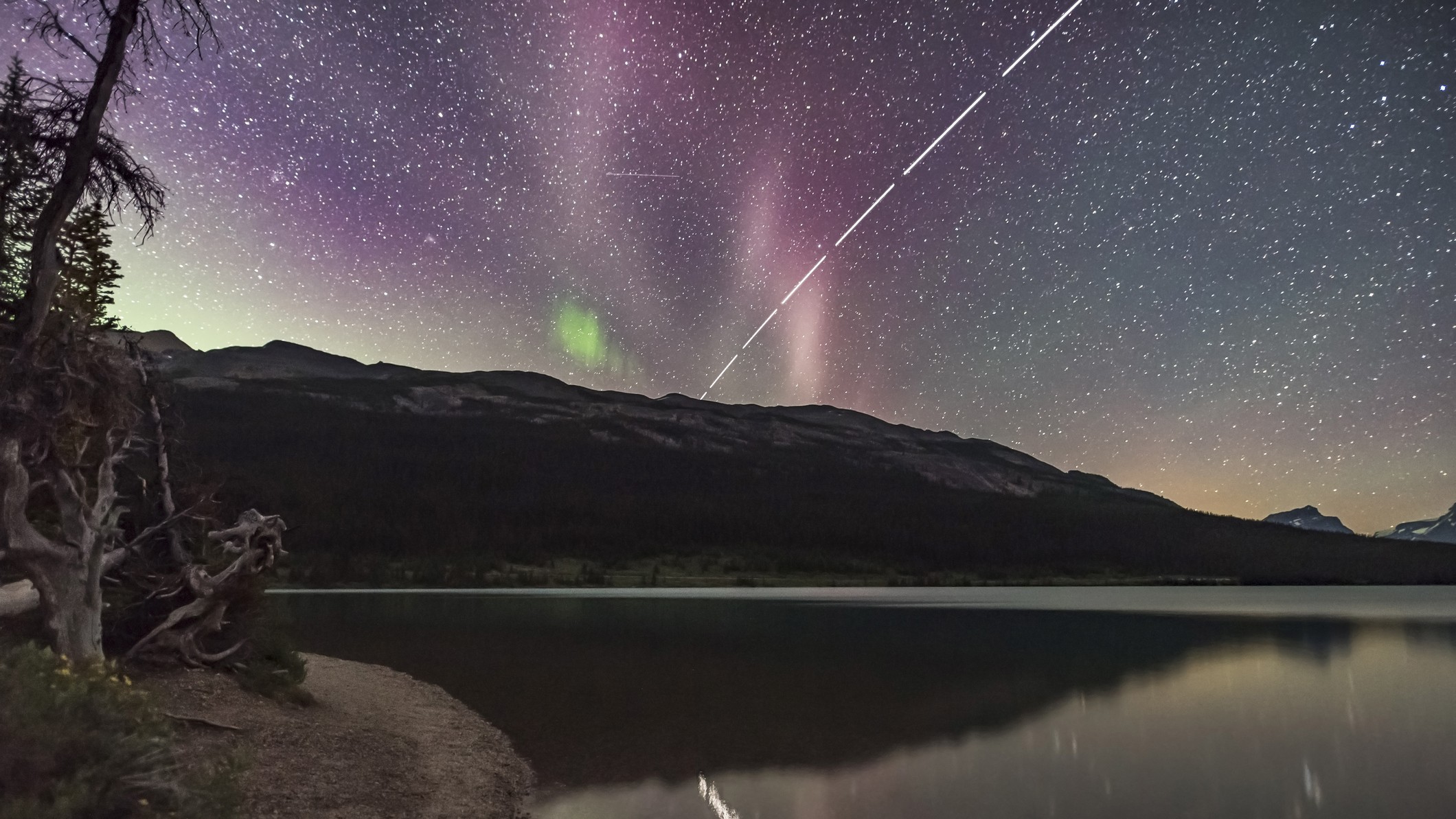Very Large Telescope: Everything you need to know
When it was completed in 1998, the Very Large Telescope was the biggest telescope in the Southern Hemisphere.

For over 20 years, the Very Large Telescope (VLT) has been the European Southern Observatory's (ESO) leading astronomical instrument.
Despite the name, the Very Large Telescope is not one telescope but rather four 8.2-meter (26.9 feet) telescopes supplemented by four 1.8-meter (5.9 feet) Auxiliary Telescopes.
These telescopes can either operate individually or combine to create what astronomers call an optical interferometer, which has a drastically larger light grasp than the individual telescopes alone do.
Very Large Telescope FAQs
Where is the VLT?
The Very Large Telescope is situated atop Cerro Paranal, an 8,645-foot-high (2,635 m) mountain in Chile's Atacama Desert, about 75 miles (120 km) south of the port city of Antofagasta.
How many telescopes make up the VLT?
The VLT has four Unit Telescopes, each with a 26.9-foot-wide (8.2 m) mirror, and four Auxiliary Telescopes, each with a 5.9-foot-wide (1.8 m) mirror.
Was the VLT in a James Bond movie?
The VLT itself wasn't in a James Bond movie. However, the Residencia, a hotel on Cerro Paranal for astronomers visiting the telescope, did feature as a villain's hideout in the 2008 James Bond movie "Quantum of Solace."
Where is the VLT located?
The Very Large Telescope is situated at the European Southern Observatory's site atop Cerro Paranal, which is 8,645 feet (2,635 m) above sea level in Chile's Atacama Desert. The VLT is accompanied by a hotel, known as the Residencia, for astronomers and engineers working there (and was famously featured in the James Bond film "Quantum of Solace").
Paranal was selected as the site of the VLT because of the excellent viewing conditions there: a very dry climate, with a relative humidity of 15% and 20% in winter and summer, respectively; and a very dark and regularly cloudless sky, with about 60% of nights completely cloud-free. The location also provides an excellent viewpoint of the Southern Hemisphere sky, including most of the Milky Way. These conditions allow for the best astronomical observations.
How big is the VLT?
Each of the VLT's four Unit Telescopes has an 8.2-meter (26.9 feet) primary mirror and a 1.1-meter (3.6 feet) secondary mirror. The primary mirrors sport active optics, in which 150 tiny actuators adjust the shape of the mirror by nanometers to compensate for the ever-changing wavefront of light resulting from the atmospheric turbulence that makes the stars twinkle and blurs the view.
The Unit Telescopes are named for objects in the night sky in the language of the Mapuche, an Indigenous people of south-central Chile. The Unit 1 telescope is named Antu, meaning the sun; the Unit 2 Telescope is called Kueyen, after the moon; the Unit 3 Telescope is named Melipal, for the Southern Cross; and the Unit 4 Telescope is called Yepun, for Venus. (Originally, "Yepun" had been translated as "Sirius," but an investigation by ESO astronomer Guillermo Delgado concluded that the correct translation of the "evening star" was Venus.)
Breaking space news, the latest updates on rocket launches, skywatching events and more!
Four other, smaller telescopes are part of the extended Very Large Telescope. Each of these Auxiliary Telescopes has a mirror that's 1.8 meters (5.9 feet) in diameter and is positioned on tracks, allowing it to be moved to 30 different positions around the four larger Unit Telescopes. These tracks, sometimes called the Paranal Railway, are intended to assist the VLT Interferometer (VLTI).
An interferometer is when several separate telescopes work in unison as one, acting like a larger, more powerful telescope. It is more commonly used in radio astronomy, where radio telescopes can be separated across continents. In the case of optical light — where the wavelength is hundreds of nanometers, as opposed to meters for radio waves — it is much more difficult to network telescopes so the light remains in phase.
The wider the baseline of the interferometer — the greater the distance between telescopes in the network — the greater the resolution of the interferometer. For the VLT, the largest baseline possible between the Unit Telescopes and the Auxiliary Telescopes is 663 feet (202 m), with different configurations possible to suit various types of objects.
The light from each telescope is fed via mirrors through the Delay Line Tunnel, which ensures that all of the light from the different telescopes arrives at the focal point in phase, rather than out of phase, which would result in destructive interference. The VLTI is used mostly for spectroscopy. The Auxiliary Telescopes also sometimes perform their own observations when the VLTI is not in use.
The VLT laser
Like most large, modern observatories, the VLT is armed with laser guide stars. In fact, the VLT had the first such laser guide star in the Southern Hemisphere.
The laser guide stars are part of the observatory's adaptive optics system. This is somewhat similar to the aforementioned active optics. When one of the 22W lasers fires into the sky, it excites sodium atoms 56 to 62 miles (90 to 100 kilometers) high in a layer of Earth's atmosphere called the mesosphere, prompting the sodium atoms to glow and create an artificial "star." The telescope's optics can lock onto that artificial star, and as it twinkles from atmospheric turbulence, the active optics change the shape of the mirror, adapting for the twinkling and effectively canceling it out. This results in a far clearer view with a much higher resolution than would otherwise be possible.
In 2016, the VLT received the Four Laser Guide Star Facility (4LGSF), which, as the name suggests, involves four lasers, allowing the blurring effect of the atmospheric turbulence to be mapped more precisely. The 4LGSF is installed on only Unit Telescope 4.
VLT instruments
The VLT has had a host of instruments over the years. Here are some of the key instruments currently on the VLT.
MATISSE
The Multi Aperture Mid-Infrared Spectroscopic Experiment (MATISSE) is the infrared spectrometer for the VLTI and is used to study stars that shed large amounts of mass, the formation of planets in dust disks, and the accretion of matter onto supermassive black holes in the centers of active galaxies.
The Echelle Spectrograph for Rocky Exoplanet and Stable Spectroscopic Observations (ESPRESSO) is an exoplanet-hunting instrument that measures the radial velocity of stars. This is how the star moves forward and backward as it revolves around the center of mass that the star shares with its orbiting planets. The greater the movements, the more massive the planet.
The Spectro-Polarimetric High Contrast Imager for Exoplanets Research (SPHERE) is designed to directly image exoplanets. Placed on Unit Telescope 3, it incorporates a coronagraph to block out the glare of the star's light so SPHERE can see warm, young planets orbiting it.
SPHERE also has its own adaptive optics system to get a clearer view, plus two cameras. The ZIMPOL camera images in visible and near-infrared light to detect reflected polarized light from gas giants and scattered light from dust disks. IRDIS is a near-infrared camera that can image young, self-luminous gas giants that are glowing with the thermal heat left over from their birth. There's also a near-infrared spectrograph to study the atmospheres of these planets.
The Cryogenic High-Resolution Infrared Echelle Spectrograph (CRIRES) has a long history on the VLT. It was among the first generation of instruments to be built for the observatory, located on Unit Telescope 1, and was designed to study molecular gas in the universe, from the atmospheres of the gas giants to planet- and star-forming regions, by splitting their light very finely to create a spectrum. In 2021, it received an upgrade with a new detector that can measure a wider range of infrared wavelengths.
The Fibre Large Array Multi Element Spectrograph (FLAMES) is a multiobject spectrograph with 130 optical fibers, each of which can simultaneously target a different object, or different regions of a large object. It is based on Unit Telescope 2.
The Ultraviolet and Visual Echelle Spectrograph (UVES) is also on Unit Telescope 2 and often works in unison with FLAMES to provide multiwavelength coverage of an object such as a nebula or a galaxy.
GRAVITY is an instrument designed for the VLT Interferometer and has been in operation since 2016. "GRAVITY is born from the desire to observe very small details of faint objects, including those at the centre[s] of galaxies," said ESO astronomer Xavier Haubois. "With its high sensitivity and accuracy, GRAVITY can reveal a whole new world of planets, stars and galactic centres that were previously out of reach because they were too faint for previous instruments.
"By combining the light from different VLT telescopes, GRAVITY can achieve the spatial resolution of an equivalent telescope of up to 130 meters [437 feet] in diameter when looking in certain directions in the sky," he added.
The Very Large Telescope's top discoveries
The Very Large Telescope has made a number of important findings in its more than two decades of operation. Here are some of the VLT's best discoveries.
Using the GRAVITY instrument on the VLTI, astronomers measured the motion of stars orbiting very close to Sagittarius A*, the supermassive black hole at the center of our galaxy. By tracking their motion around these stars' orbits, astronomers confirmed that the stars are under the gravitational influence of an object with 4.3 million times the mass of the sun. Something so massive could only be a black hole. Astronomers Reinhard Genzel and Andrea Ghez won the 2020 Nobel Prize in Physics for this work.
Taking pictures of exoplanets is still difficult because of how distant the planets are and how close they are to their star. It was first accomplished back in 2004 and 2005 when astronomers using the VLT in conjunction with the Hubble Space Telescope snapped a giant planet orbiting a brown dwarf called 2M1207A.
Although the VLT did not detect the fast radio burst called FRB 20220610A — which was detectable for only a millisecond at radio wavelengths — in June 2022, it did track the FRB back to its home galaxy and found it to be the most distant FRB so far, in a galaxy that we see as it existed 8 billion years ago.
While the James Webb Space Telescope routinely scans the atmospheres of exoplanets today, this task was much more difficult before JWST. In 2010, the VLT successfully captured the spectrum of the super-Earth GJ 1214b, which is 40 light-years away and has a mass that's 6.5 times greater than Earth's. Although the VLT didn't identify any specific molecules, it ruled out a hydrogen-rich atmosphere, meaning it is either swathed in clouds or has a steamy atmosphere.
According to the Big Bang theory, the universe was hotter in the distant past and cooled over the eons as it expanded. In 2000, observations by the VLT's UVES instrument of a quasar that we see as it existed 12 billion years ago found that the universe at that time was between 6 and 14 kelvins, which agrees perfectly with the prediction from the Big Bang theory. Although these temperatures might sound frigid, consider that today it is only 2.7 kelvins.
Then, in 2008, the same team achieved an even more precise measurement using a similar method, finding a temperature of 9.15 kelvins, which is the Big Bang theory's exact prediction.
Top VLT images
Scroll through the gallery below to see some of the top images captured by the VLT.
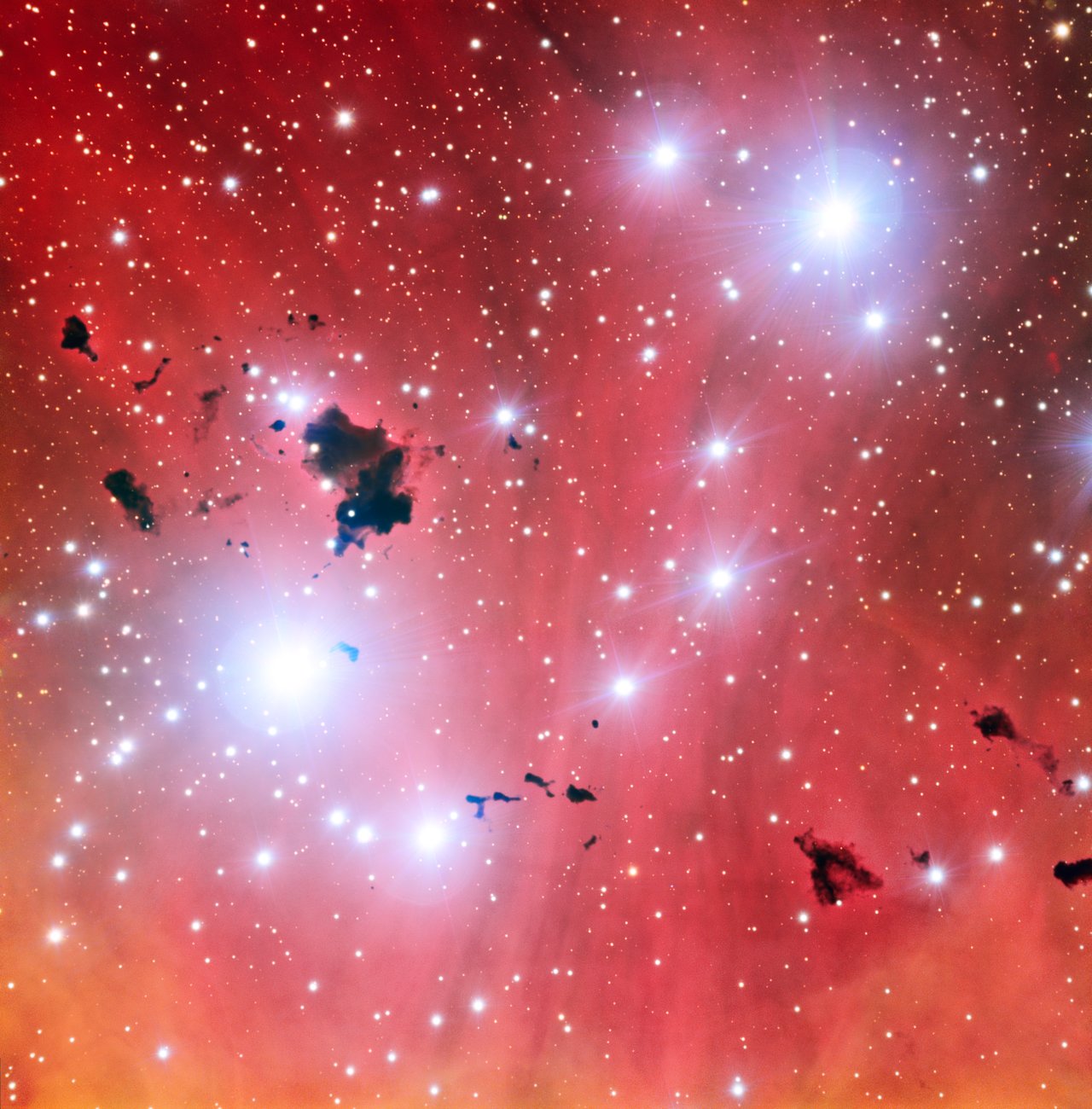

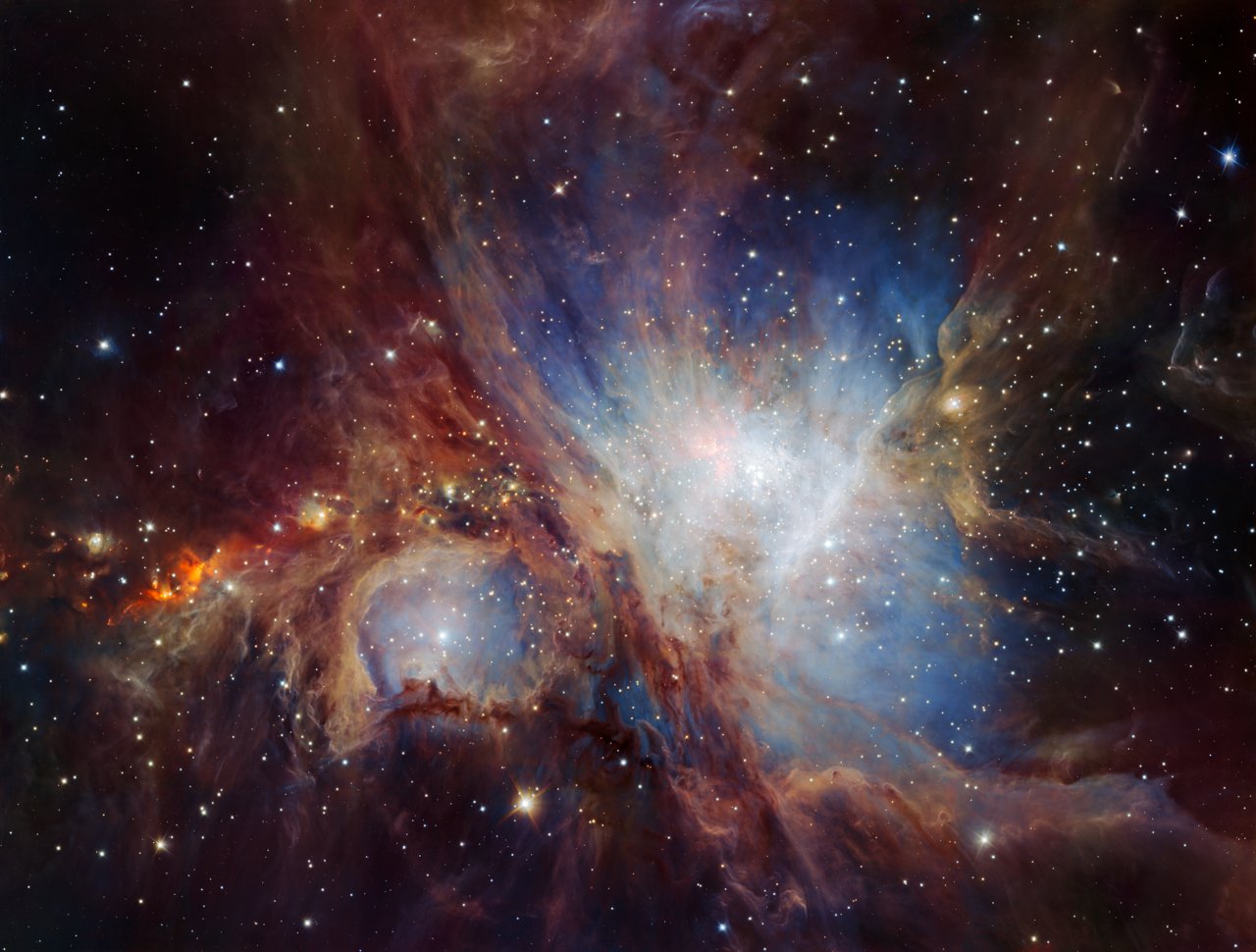

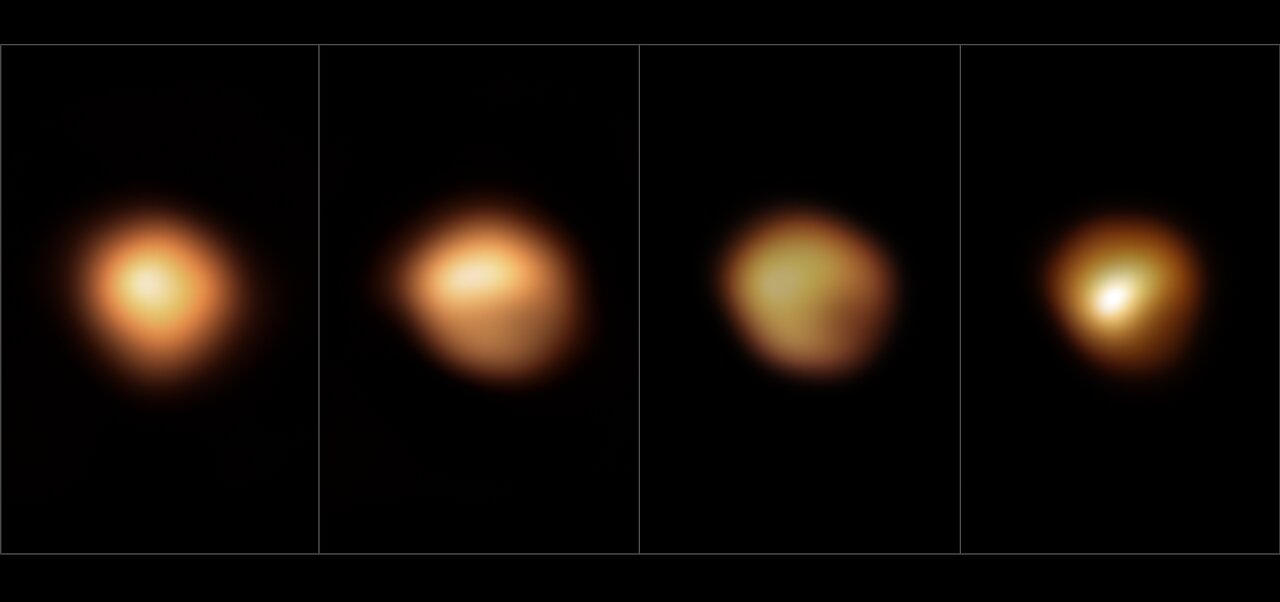
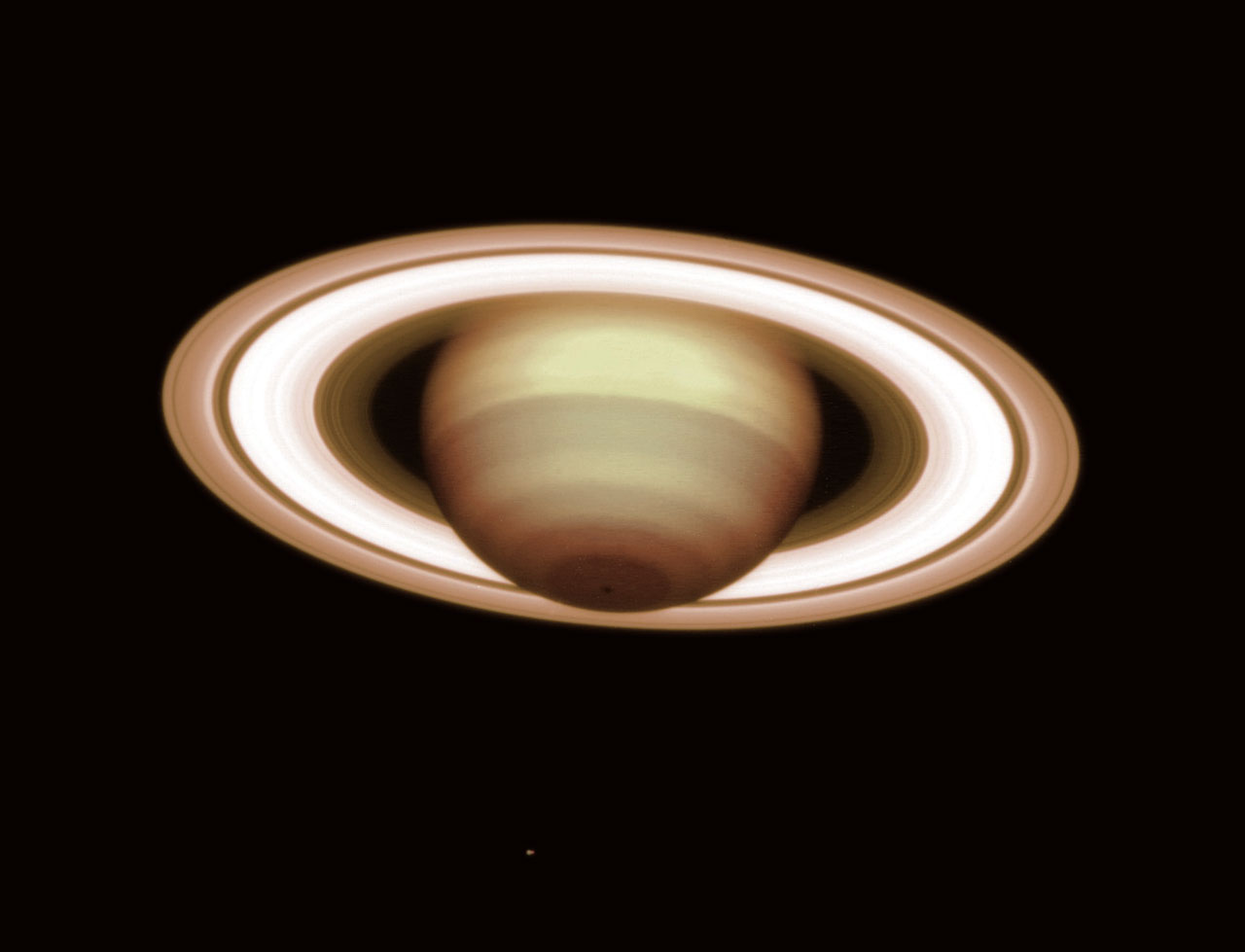

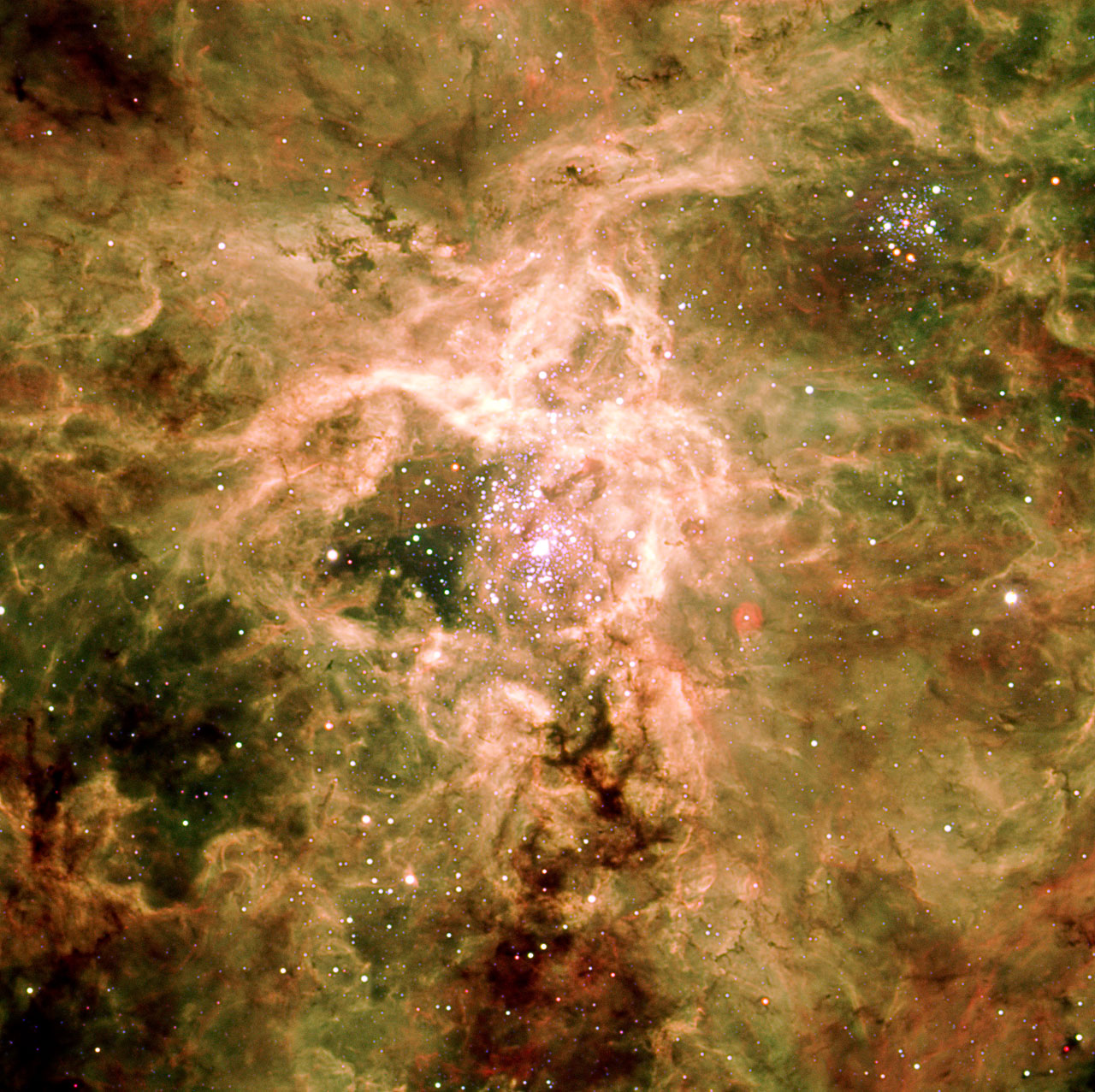
Additional resources
You can learn about the European Southern Observatory, the organization that built and uses the Very Large Telescope, at eso.org.
Besides Cerro Paranal, which is home to the VLT, and Cerro Armazones, which is the site of the Extremely Large Telescope, ESO has another observatory on the Chilean peak of La Silla. You can learn about its telescopes on ESO's La Silla Observatory page.
The VLT isn't the only observatory on Cerro Paranal. There's also the Visible and Infrared Survey Telescope for Astronomy (VISTA), which was designed and built for ESO by a consortium of universities in the U.K. You can learn more about VISTA here. Also on Cerro Paranal is the VLT Survey Telescope, which you can learn about on ESO's VLT Survey page.
Bibliography
ESO, Very Large Telescope: The World's Most Advanced Visible-light Astronomical Observatory, https://www.eso.org/public/teles-instr/paranal-observatory/vlt/
ESO, Paranal Observatory, https://www.eso.org/public/unitedkingdom/teles-instr/paranal-observatory/
ESO, Residencia, https://www.eso.org/public/archives/static/events/special-evt/bond/Residencia.html
ESO, Bond@Paranal, https://www.eso.org/public/archives/static/events/special-evt/bond/BondatParanal.html
G. Lombardi, V. Zitelli, S. Ortolani, 'The Astroclimatological Comparison of the Paranal Observatory and El Roque de Los Muchachos Observatory', Monthly Notices of the Royal Astronomical Society, Vol. 399, issue 2, pp783–793 (2009), https://academic.oup.com/mnras/article/399/2/783/1061377
Florian Kerber, Richard R. Querel and Reinhard Hanuschik, 'Quantifying Observing Conditions on Paranal Using an IR Camera', Proceedings of SPIE, Vol. 9149 (2014) https://arxiv.org/abs/1408.1752
P. Dierickx et al, 'The VLT Primary Mirrors: Mirror Production and Measured Performance', https://www.eso.org/sci/facilities/paranal/telescopes/ut/m1unit.html
ESO, 'Names of the VLT Unit Telescopes: What Do the Names of the VLT Unit Telescopes Mean?', https://www.eso.org/public/teles-instr/paranal-observatory/vlt/vlt-names/
Guillermo Delgado, 'On the Meaning of 'Yepun': An Investigation into the Meaning of 'Yepun", ESO, https://www.eso.org/public/teles-instr/paranal-observatory/vlt/vlt-names/yepun/
ESO, 'The VLTI Auxiliary Telescopes', https://www.eso.org/sci/facilities/paranal/telescopes/vlti/subsystems/at/description.html
ESO, Adaptive Optics, https://www.eso.org/public/teles-instr/technology/adaptive_optics/
ESO, '4 Laser Guide Star Facility: Four New Stars to Defeat Atmospheric Turbulence', https://www.eso.org/public/teles-instr/paranal-observatory/vlt/vlt-instr/4lgsf/
ESO, 'First Light for the Four Laser Guide Star Facility on ESO's Very Large Telescope', 27 April 2016, https://www.eso.org/public/news/eso1613/
B. Lopez et al, 'MATISSE, the VLTI Mid-Infrared Imaging Spectro-Interferometer', Astronomy & Astrophysics, 659 (2022), https://www.aanda.org/articles/aa/full_html/2022/03/aa41785-21/aa41785-21.html
F. Pepe et al, 'ESPRESSO at VLT: On-Sky Performance and First Results', Astronomy & Astrophysics, 645 (2021), https://www.aanda.org/articles/aa/full_html/2021/01/aa38306-20/aa38306-20.html
J.-L. Beuzit et al, 'SPHERE: The Exoplanet Imager for the Very Large Telescope', Astronomy & Astrophysics, 631 (2019), https://www.aanda.org/articles/aa/full_html/2019/11/aa35251-19/aa35251-19.html
ESO, 'SPHERE: Spectro-Polarimetric High-contrast Exoplanet REsearch instrument', https://www.eso.org/public/teles-instr/paranal-observatory/vlt/vlt-instr/sphere/
H. M. Schmid et al, 'SPHERE/ZIMPOL High Resolution Polarimetric Imager', Astronomy & Astrophysics, 619 (2018), https://www.aanda.org/articles/aa/full_html/2018/11/aa33620-18/aa33620-18.html
J. de Boer et al, 'Polarimetric Imaging Mode of VLT/SPHERE/IRDIS', Astronomy & Astrophysics, 633 (2020), https://www.aanda.org/articles/aa/full_html/2020/01/aa34989-18/aa34989-18.html
ESO, CRIRES (Pre-Upgrade): CRyogenic high-resolution InfraRed Echelle Spectrograph', https://www.eso.org/public/teles-instr/paranal-observatory/vlt/vlt-instr/crires/
R. J. Dorn et al, 'CRIRES+ On the Sky at the ESO Very Large Telescope: Observing the Universe at Infrared Wavelengths and High Spectral Resolution', Astronomy & Astrophysics, 671 (2023), https://www.aanda.org/articles/aa/full_html/2023/03/aa45217-22/aa45217-22.html
ESO, 'FLAMES: Fibre Large Array Multi Element Spectrograph', https://www.eso.org/public/teles-instr/paranal-observatory/vlt/vlt-instr/flames/
ESO, 'UVES: Ultraviolet and Visual Echelle Spectrograph', https://www.eso.org/public/teles-instr/paranal-observatory/vlt/vlt-instr/uves/
F. Eisenhauer et al, 'GRAVITY: Microarcsecond Astrometry and Deep Interferometric Imaging with the VLT', Astrophysics and Space Science Proceedings, pp361–365, https://link.springer.com/chapter/10.1007/978-1-4020-9190-2_61
ESO, GRAVITY, https://www.eso.org/public/teles-instr/paranal-observatory/vlt/vlt-instr/gravity/
R. Abuter et al, 'Mass Distribution in the Galactic Center Based on Interferometric Astrometry of Multiple Stellar Orbits', Astronomy & Astrophysics, 657, (2022) https://www.aanda.org/articles/aa/full_html/2022/01/aa42465-21/aa42465-21.html
ESO, 'Yes, It Is the Imager of an Exoplanet: Astronomers Confirm the First Image of a Planet Outside of Our Solar System' (2005) https://www.eso.org/public/news/eso0515/
G. Chauvin et al, 'Giant Planet Companion to 2MASSWJ1207334-393254', Astronomy & Astrophysics, 438 (2005) https://www.aanda.org/articles/aa/abs/2005/29/aahd051/aahd051.html
ESO, 'Astronomers Detect Most Distant Fast Radio Burst To Date', (2023) https://www.eso.org/public/news/eso2317/
S. D. Ryder et al, 'A Luminous Fast Radio Burst That Probes the Universe At Redshift 1', Science, Vol 382, Issue 6668, pp294–299 (2023) https://www.science.org/doi/10.1126/science.adf2678
ESO, 'First Super-Earth Atmosphere Analysed' (2010), https://www.eso.org/public/news/eso1047/
Jacob L. Bean, 'A Ground-Based Transmission Spectrum of the Super- Earth planet GJ 1214b', Nature, (2010), https://www.nature.com/articles/nature09596
ESO, 'VLT Observations Confirm that the Universe Was Hotter in the Past: UVES Measures the Cosmic Temperature 12 Billion Years Ago' (2000), https://www.eso.org/public/news/eso0043/
R. Srianand, P. Petitjean and C. Ledoux, 'The Cosmic Microwave Background Radiation Temperature at a Redshift if 2.34', Nature, Vol 408, pp911–935 (2000), https://www.nature.com/articles/35050020
ESO, 'A Molecular Thermometer for the Distant Universe: First Accurate Measurement of the Temperature of the Cosmic Background at an Early Epoch' (2008), https://www.eso.org/public/news/eso0813/
R. Srianand, P. Noterdaeme, P. Petitjean and C. Ledoux, 'First Detection of CO in a High-Redshift Damped Lyman-alpha System', Astronomy & Astrophysics, 482 (2008), https://www.aanda.org/articles/aa/abs/2008/18/aa09727-08/aa09727-08.html

Keith Cooper is a freelance science journalist and editor in the United Kingdom, and has a degree in physics and astrophysics from the University of Manchester. He's the author of "The Contact Paradox: Challenging Our Assumptions in the Search for Extraterrestrial Intelligence" (Bloomsbury Sigma, 2020) and has written articles on astronomy, space, physics and astrobiology for a multitude of magazines and websites.



